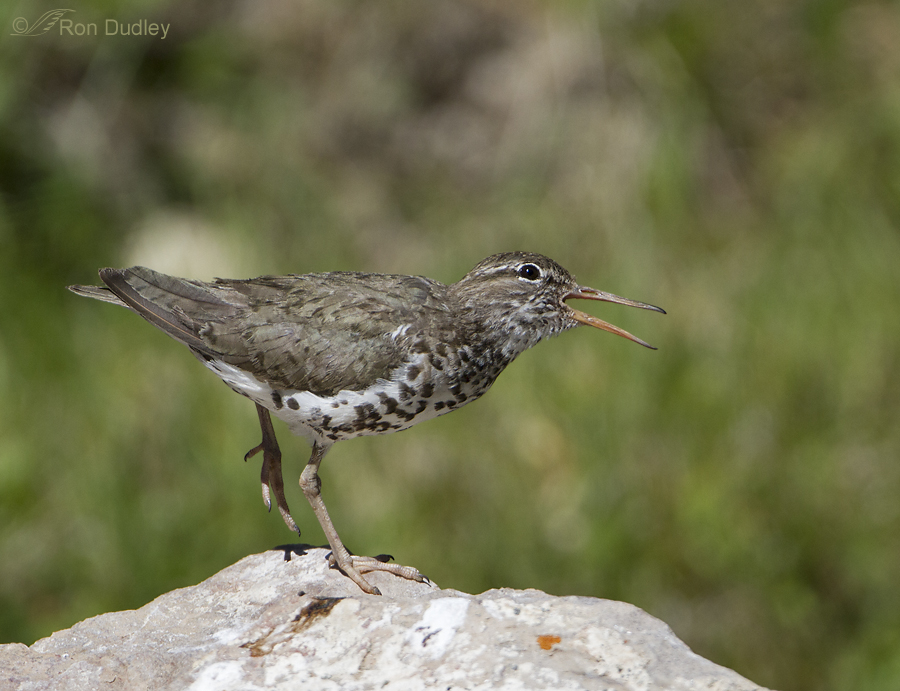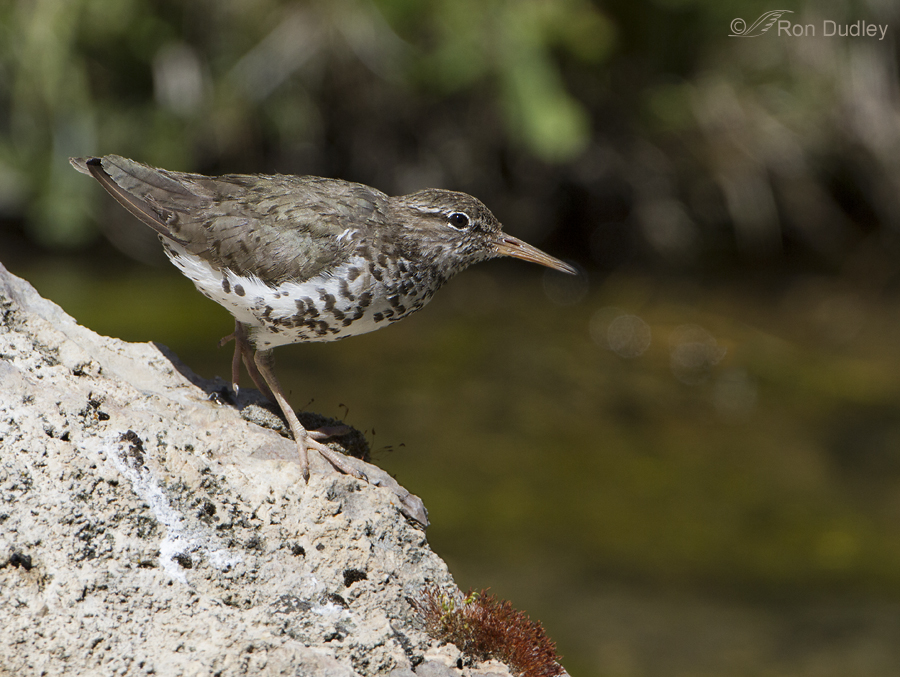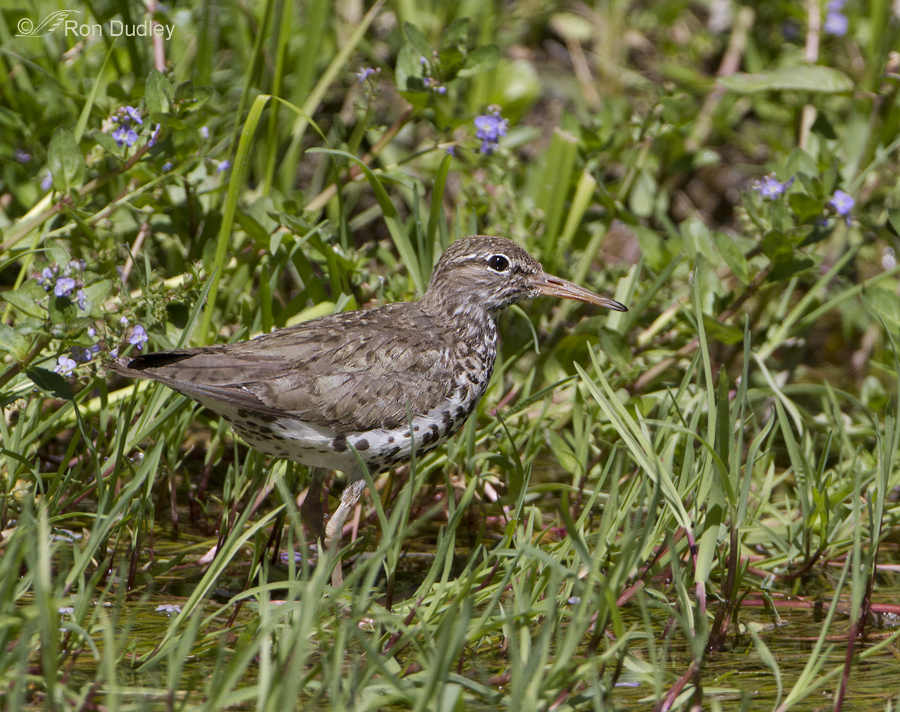Spotted Sandpipers are:
- the most widespread breeding sandpiper in North America
- known for almost constantly “teetering” their tail and rump up and down, thus the other common names of teeter-peep, teeter-bob, jerk bird, teeter-snipe and tip-tail. I call the behavior “butt-bumping”
- among a small number of bird species with reversed sex roles – males are the primary parents while females are more active and aggressive during courtship. Females are first to arrive at breeding grounds, establish territories and attract mates
- unusual among shorebirds in that females are larger than males
- polyandrous – females mate with as many as four males, then the males care for the clutch and brood
I see this species occasionally but they’re very small and I’m usually not close enough or the angle is too steep (shooting from my pick-up) for good shots. I’ve often put down my camera and just observed them – their butt-bumping is quite entertaining to watch.
1/3200, f/6.3, ISO 500, 500 f/4, 1.4 tc, natural light
But on my last Montana trip I got some shots of one of them I like. We’d traveled a great distance on dusty roads to reach a small canyon with a running stream. The first day in the canyon we only got a glimpse of this sandpiper because just as we spotted it two Prairie Falcons harassed this bird (at least I suspect it was this same bird) and it flew off. But the next day we came back and found the sandpiper feeding in the slow-moving and very shallow stream. Soon it hopped up on this rock at almost eye level.
1/3200, f/6.3, ISO 500, 500 f/4, 1.4 tc, natural light
But it was very wary of potential danger from the sky – it looked up several times and gave what may have been an alarm call. I suspect that part of its nervousness was caused by its close call the day before.
It perched on this rock for several minutes and for nearly all of that time it held its left leg up in this position, butt-bumping as it did so. I wondered if the leg or foot was injured but later it walked and foraged normally.
1/2500, f/7.1, ISO 500, 500 f/4, 1.4 tc, natural light
Soon it walked down the side of the rock and closer to the shallow stream that you can see out of focus at lower right.
1/2500, f/7.1, ISO 500, 500 f/4, 1.4 tc, natural light
It wandered down the stream and gave us a nice colorful (though busy) setting for a few shots and then flew off.
Many folks in southern states never get to see the namesake spots on the breast and belly of this bird because they don’t see the species in breeding plumage. Birds in non-breeding plumage have a clean white breast and belly.
Ron






Oh wow. Thank you. And isn’t it amazing just how much time can get consumed with ‘just watching’ birds. Time wasted some will say – but not me. Or I suspect any of your visitors here.
“Just watching” them is almost as much fun as photographing them, Elephant’s Child. And sometimes it’s more fun.
Superb shots, Ron! You’re right, we usually see them sans spots down here.
Thanks, Wally. I figured yours would be spotless – doesn’t look like they breed down there.
Nice shots Ron. Last Sunday I saw my first Spotties of the year (Washington State). Interestingly enough, they are already in their winter plumage and have the clean white breast and belly. I’m pretty certain they are adults and not immatures.
John, I wonder if elevation plays a role in when they lose their breeding plumage. This bird was at approximately 6500′.
This is a lovely series of pictures. Thanks!
Thank you, Sharon.
It’s nice to be rewarded with good views sometimes, isn’t it? I’m unlikely to see them in breeding plumage, so it’s great to see these images and enjoy the views at second hand.
Exactly, Sonja. This was the first time I’ve been this close at almost eye level to the species.